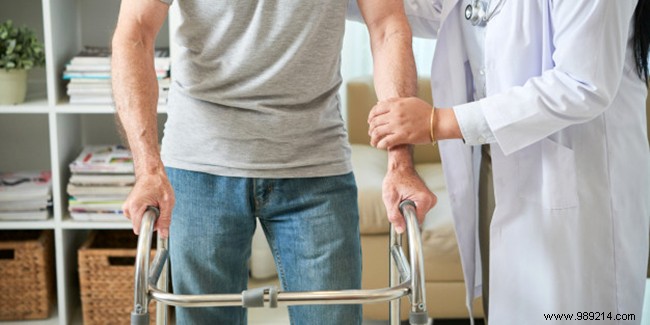
Follow-up and Rehabilitation Care establishments (SSR) designate structures which in principle receive people following hospitalization, but also those who need specific care due to a loss of autonomy and who live in their home. or in a specialized institution. Although the vast majority of patients are seniors and adults, there are also specialized SSRs for children and adolescents in particular. The main missions of the SSRs are rehabilitation, rehabilitation in the event of new bodily or sensory limitations and preparation for the return home of patients.
There are 1,700 Follow-up and Rehabilitation Care (SSR) establishments in France – structures previously called “convalescent homes” – the majority of which accommodate adults and seniors who require re-education or rehabilitation due to a medical condition. of health and a loss of autonomy, in order to be able to return to their home, or any other structure where they previously resided, and be able to carry out the acts of daily living as well as possible on their own.
Due to the aging of the population in particular, more and more people require the use of SSR, the primary role of which is to ensure that a person can return to their home and recover their autonomy of action as much as possible. There is also an increasingly strong demand, in particular from the elderly who want to stay as long as possible at home rather than residing in a specialized establishment. This is why many Aftercare and Rehabilitation establishments have a geriatrics department.
Attendance at SSRs has therefore been constantly increasing since the mid-2000s, and the average length of stay in these establishments is nearly 36 days.
SRH facilities see about 1 million people each year and the average age of patients is 75 years old. These are small care units with a maximum of 80 beds. These establishments are either public, private not-for-profit or private-for-profit.
Follow-up and Rehabilitation Care is most often provided in dedicated establishments and requires daily stays for a longer or shorter period depending on the needs of the patients.
However, the operation of the SSRs has been adapted for several years in the face of the resurgence in the number of patients and the pathologies which differ and require different care depending on each case.
Thus, depending on the state of health of people, and in particular their social situation and vis-à-vis their isolation, doctors can prescribe SSR in the form of day care (i.e. the patient returns home in the evening), or 100% at home.
SRH can also be provided in the form of sessions, without having to spend a whole day in a facility specializing in this care. It is indeed the attending physician of the person concerned by SSR who judges their usefulness and the way in which they will be provided.
Today, the partial reception of patients in Aftercare and Rehabilitation establishments corresponds to 15% of hospital days, as indicated by the Ministry of Health.
On the other hand, the functioning of the SSRs has also been adapted to the different pathologies of their patients. Thus, more and more, these establishments offer specific courses for a more rational organization. There are thus specialized SSRs in multipurpose care, in affections of the nervous system, cardiovascular, respiratory, motor apparatus, etc.
Increasingly in demand, in particular due to the aging of the population, SRH establishments, often small units, are financially fragile, as indicated by the Ministry of Health.
A reform of their financing is currently underway in order to better value their acts and care and provide these essential health establishments for the rehabilitation and rehabilitation, in particular of seniors with loss of autonomy, with the minimum income necessary for their operation.